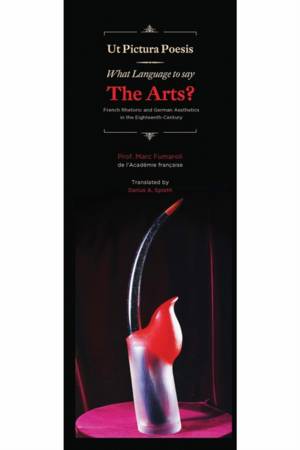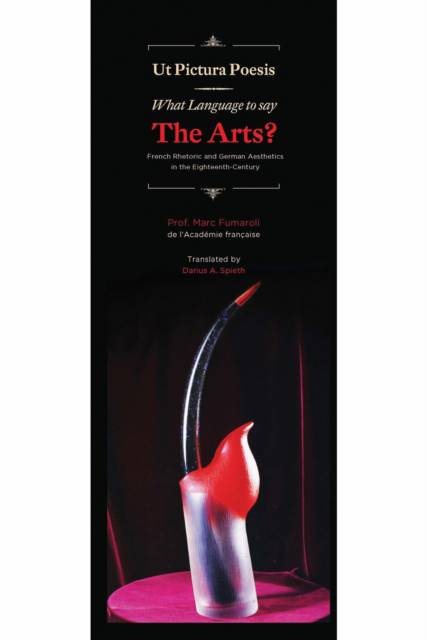
- Afhalen na 1 uur in een winkel met voorraad
- Gratis thuislevering in België vanaf € 30
- Ruim aanbod met 7 miljoen producten
- Afhalen na 1 uur in een winkel met voorraad
- Gratis thuislevering in België vanaf € 30
- Ruim aanbod met 7 miljoen producten
Zoeken
What Language to Say the Arts?
French Rhetoric and German Aesthetics in the Eighteenth Century
Marc Fumaroli
Paperback
€ 20,45
+ 40 punten
Omschrijving
Taking its cue from Horace's saying “As is painting, so is poetry, Marc Fumaroli's treatise What Language to Say the Arts? revisits the genesis of the “conceptual turn” in art. Fumaroli argues that the origins of conceptual art can be found in the emergence of aesthetics as a distinct branch of philosophy in eighteenth-century Germany.
Specificaties
Betrokkenen
- Auteur(s):
- Vertaler(s):
- Uitgeverij:
Inhoud
- Aantal bladzijden:
- 72
Eigenschappen
- Productcode (EAN):
- 9780807164150
- Verschijningsdatum:
- 28/02/2016
- Uitvoering:
- Paperback
- Afmetingen:
- 114 mm x 292 mm
- Gewicht:
- 142 g

Alleen bij Standaard Boekhandel
+ 40 punten op je klantenkaart van Standaard Boekhandel
Beoordelingen
We publiceren alleen reviews die voldoen aan de voorwaarden voor reviews. Bekijk onze voorwaarden voor reviews.








